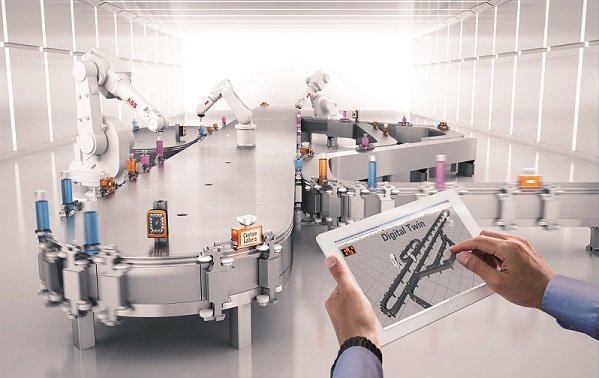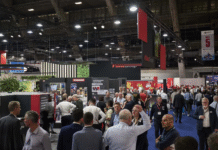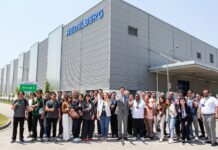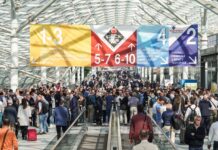
The packaging industry has seen a revolutionary transformation that was unimaginable a decade ago. Over the years, the industry has seen packaging goods in immeasurable sizes and varied shapes. There is no doubt that good packaging attracts customers. However, packaging should spread its magic by being interactive. It should tell something precise about the product inside and about the brand that manufactured it. The personalized
the connection between brand and consumer has been driving packing design for years.
Customization and individualization have always had an enormous share of the packaging industry. Traditional packaging companies have maintained profitability by generating products on a massive scale. The equation has long been a simple one – keep costs low by accepting only large volume orders.
Automation and robotics over the years have been instrumental in providing cutting-edge technology to packaging solutions. With the latest industrial revolution, packaging is expected to receive a fillip by building its networked value.
Mass customization and personalized packaging
Today, with ever-changing consumer demands, there is a clear need for sustainability and cost-effective packaging machines. The major challenge for machine builders is to manufacture batch sizes of one economically, improve overall equipment effectiveness (OEE), and reduce unplanned downtime.
Machine builders focus on reinforcing a structured approach to enable custom packaging techniques. The industry-driven, multivendor environment looks for a collaborative partnership to ensure operational consistency, interoperability, transparency, and decentralized intelligence. Moving from mass production to mass customization needs fast production changeovers demanding a modular, flexible machine design.
The transport system is a crucial component
A conventional packaging line comprises conveyors and robots needing precise synchronization and damage prevention of both product and system. Moreover, maintenance of such systems on the shop floor was always challenging. Various solutions have been tried out to enable mass customization – most have not been economically viable. ACOPOStrak from B&R has been a sheer game changer in this segment, allowing the adaptive machine.
The next-generation intelligent transportation system offers unmatched flexibility and usability to packaging lines. This highly flexible transport system extends the mass production economy since parts and products are transported quickly and flexibly between processing stations on independently-controlled shuttles.
A generational leap in intelligent, flexible transport systems, ACOPOStrak’s unique design delivers decisive technological advantages for connected manufacturing with diverters enabling the merging of product flows or diverting product flows at full production speeds. In addition, it helps manufacturers produce multiple product variants on the same line and packaged in custom sets with zero downtime for changeover.
ACOPOStrak boosts overall equipment effectiveness (OEE), multiplies return on investment (ROI), and accelerates time to market (TTM). B&R’s powerful Automation Studio software is a single platform for the complete software development supporting a comprehensive range of hardware from the company, which ensures the success of this approach. Automation Studio coupled with open standards such as Powerlink, openSafety, OPC UA, and PackML enables machine builders to create seamless communication and well- orchestrated performance across multivendor lines.
Integrated Machine Vision
Another notable innovation, integrated machine vision, plays a significant role in achieving and maintaining high quality in various packaging stages on the production floor. Machine vision can be used to inspect different processes like code validation, matching, shape identification, QA for filling and capping, liquid filling level, contamination, sealing, labeling, QR code identification. A key differentiator for any packaging company, machine vision is integrated into the automation portfolio, and companies do not need to invest in an additional controller for inspection. Machine vision leads to productivity through lower operating costs, cutting costs in inspection processes, and reducing market rejections.
Machine vision technology is suited for very specific applications in the packaging industry, enhancing productivity and quality in many ways. However, until today, machine control and machine vision were believed to be two different worlds. Incorporating machine vision into an application was looked at as a highly complex task. B&R’s vision system provides an unprecedented level of integration and flexibility, eliminating drawbacks previously associated with vision systems.
Most of us in the field of automation are aware that integration solves major issues. B&R’s vision system seamlessly integrated into our automation portfolio enables extremely precise synchronization for high-speed image capture. Object-specific functions such as bright-field or dark-field illumination are easy to implement.
Image triggers and lighting control can be synchronized with the rest of the automation system in real hard time and with sub-microsecond precision.
The OMAC PackML standard with OPC UA
Vendor-independent packaging lines are more of a reality using PackML, which gives all the machines that make up a packaging line a standard look and feel and ensures operational consistency. The modularity and consistency of PackML enable self-optimization and self-configuration of production lines and facilities. With its modular application development method – mapp technology, B&R has revolutionized application development in automation. These modular software blocks simplify program development, reduce development time by an average of 67% and improve diagnostics.
Mapp PackML represents the logic of a machine controller as per the OMAC PackML standard. With mapp, it becomes effortless to configure and relieves the developer of programming every detail. Furthermore, Mapp View helps to manage and visualize these integrated programmable states easily across different platforms and displays. Mapp OEE permits the automatic collection of production data and provides OEE functionality without
any programming.
The Open standards of PackML combined with OPC UA enables seamless flow of data from field level to supervisory level or IT. OPC UA is an independent and flexible communication protocol that transfers all production data within the machine, machine-to-machine, and machine-to-MES / ERP / cloud. This eliminates the need for traditional factory-level Fieldbus systems. OPC UA is implemented using standard PLC open function blocks. Such widely used queuing protocols such as OPC UA, MQTT or AMQP, enables machines to share data to IT systems. Furthermore, it ensures that the cloud receives data even when the network connection has low bandwidth or is intermittently unavailable.
The OEM advantage with Packaging 4.0
Today the challenge is not the technology but the mindset. However, as more OEMs understand that Industrial IoT and advanced automation technology are mature, safe, and secure to implement, the barriers are reduced. For Indian OEMs, whether SMEs, MSMEs, or big players, understanding the advantages and taking action is essential for the Packaging 4.0 journey.
Today, digital transformation has enabled machines and lines to aggregate production scheduling, asset management, operational data, energy data, and more. B&R boosts machine builders in their digital transformation journey with various solutions for machine and factory automation. With its edge architectures, B&R also collaborates with factories to make new and existing installations smart. Together with energy and condition monitoring and process data acquisition, these architectures are practical solutions for packaging
machine builders and factories to become efficient and more intelligent in a cost-effective manner.
Pooja Patil in the Corporate Communication department of B&R Industrial Automation India in Pune.










